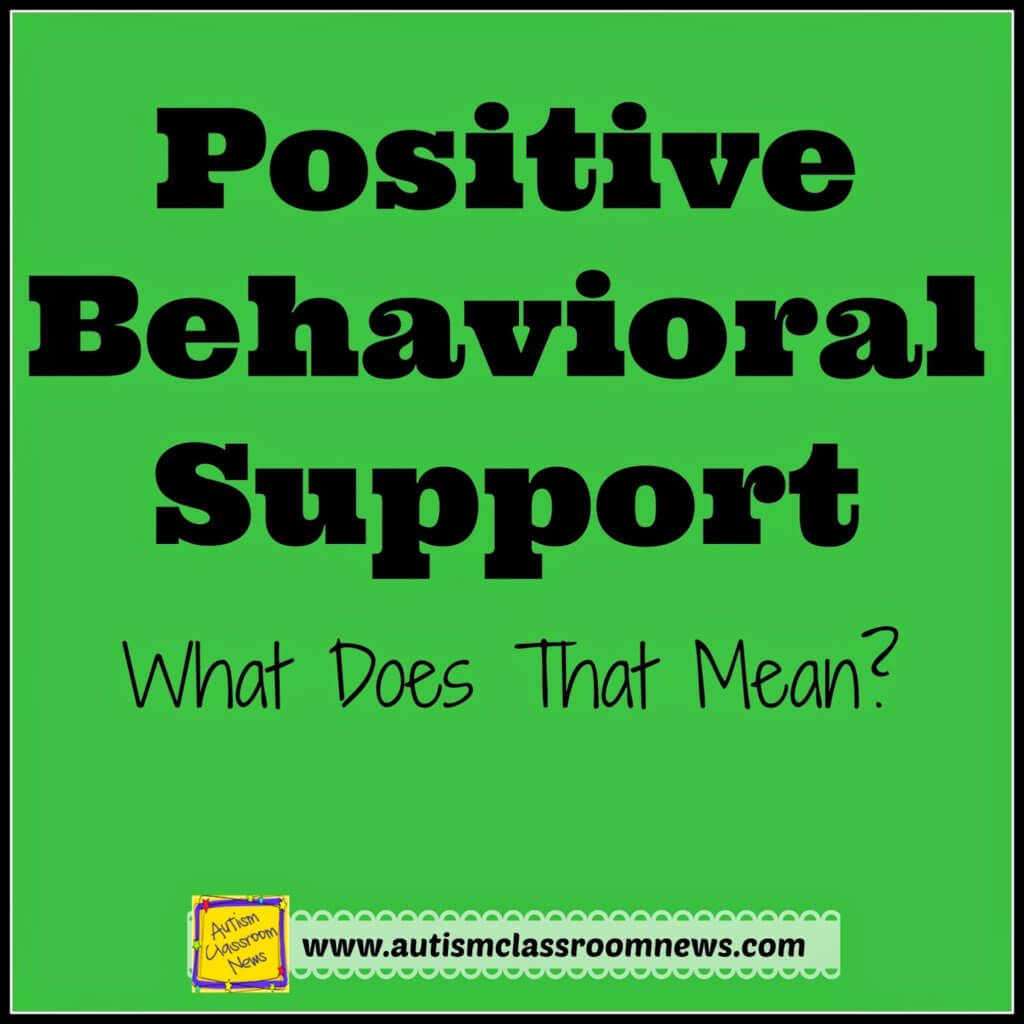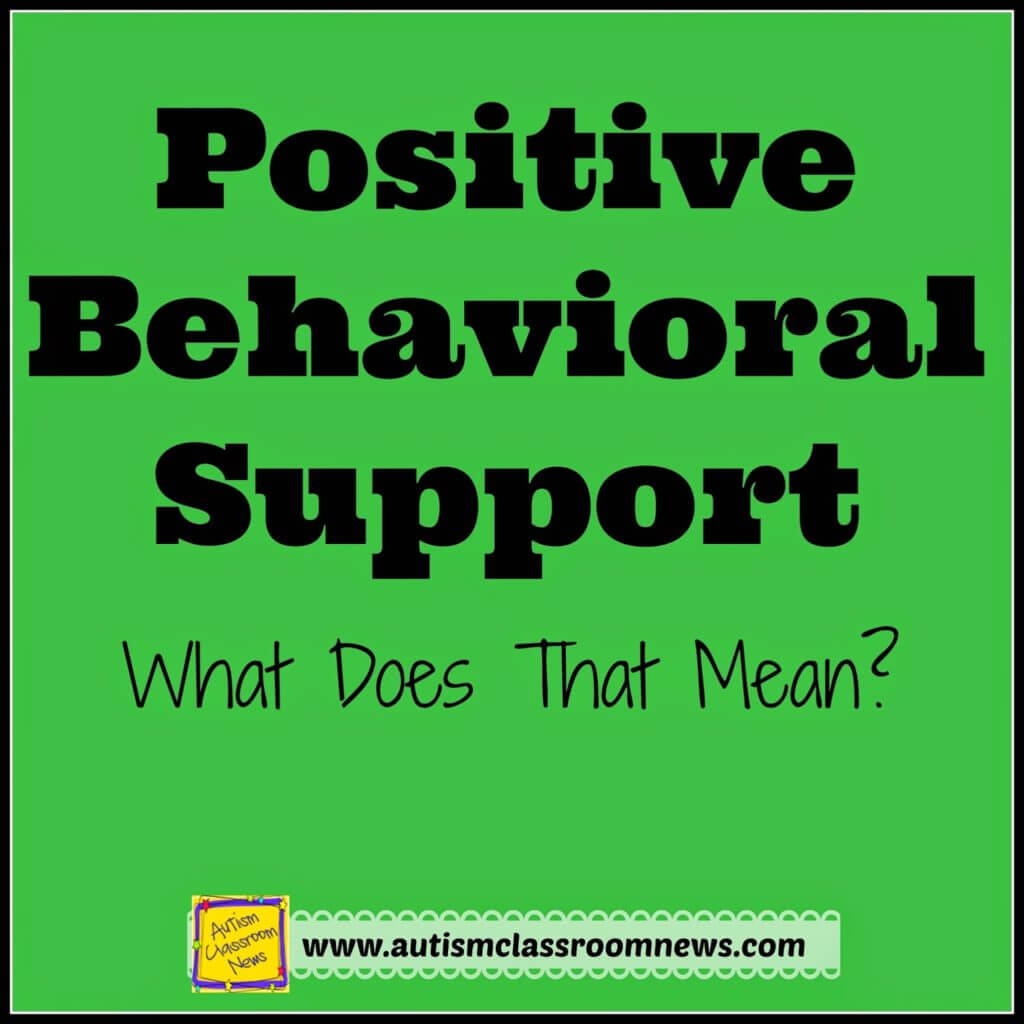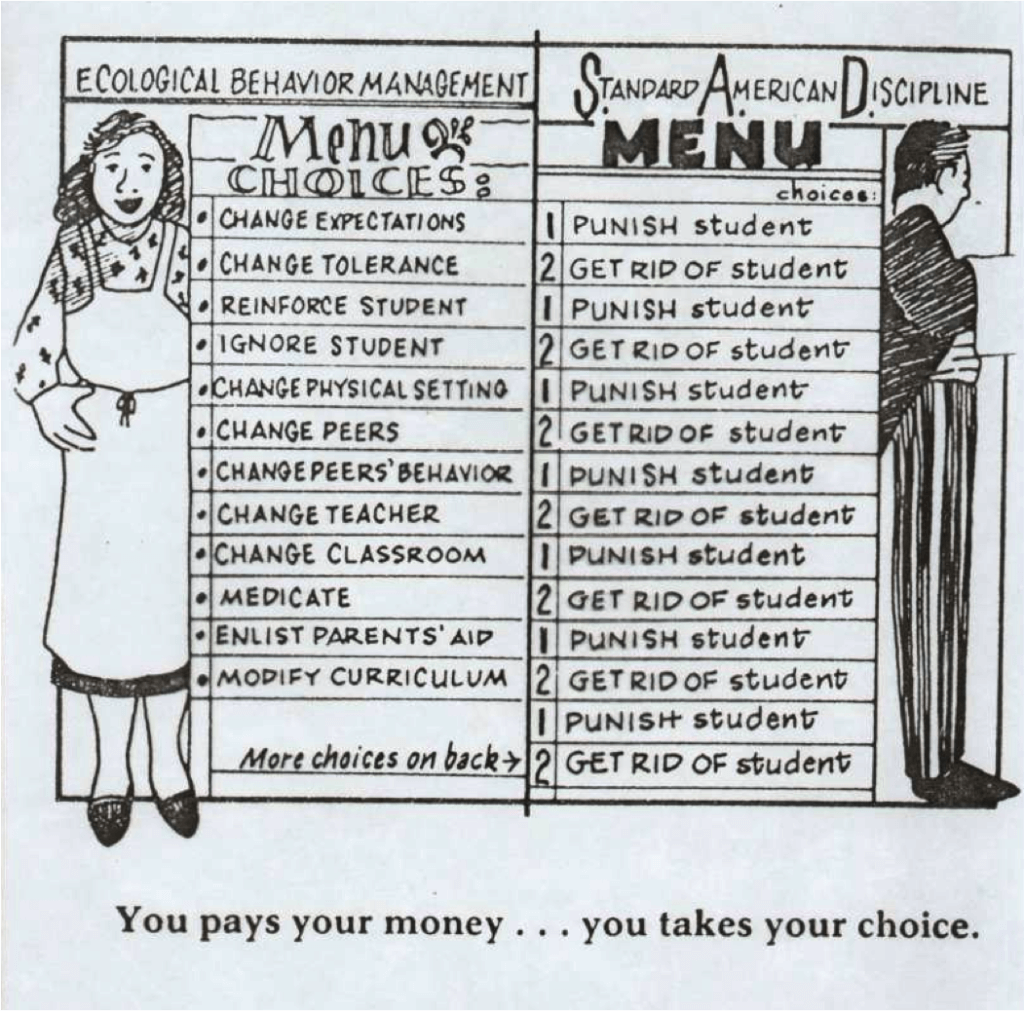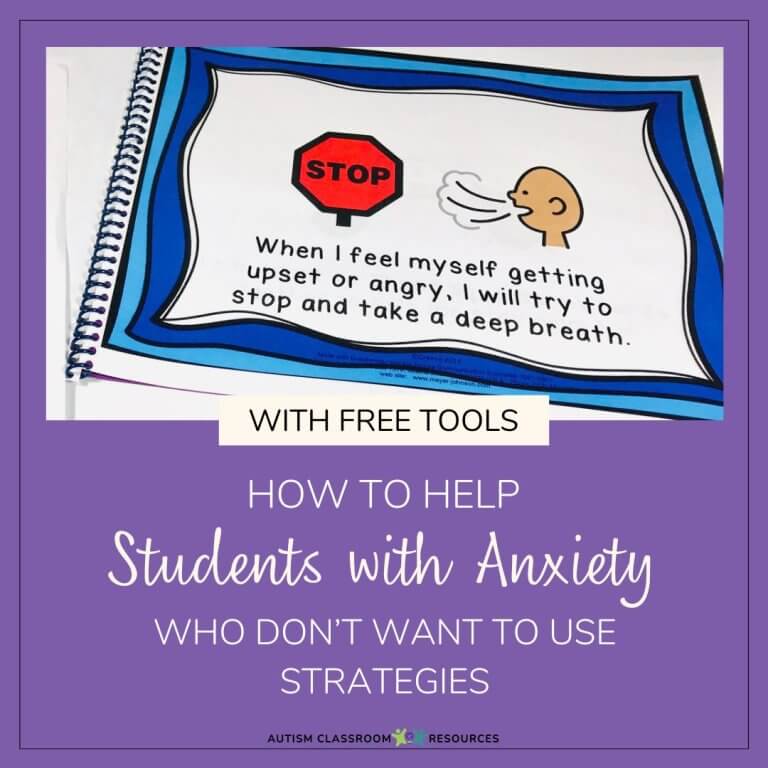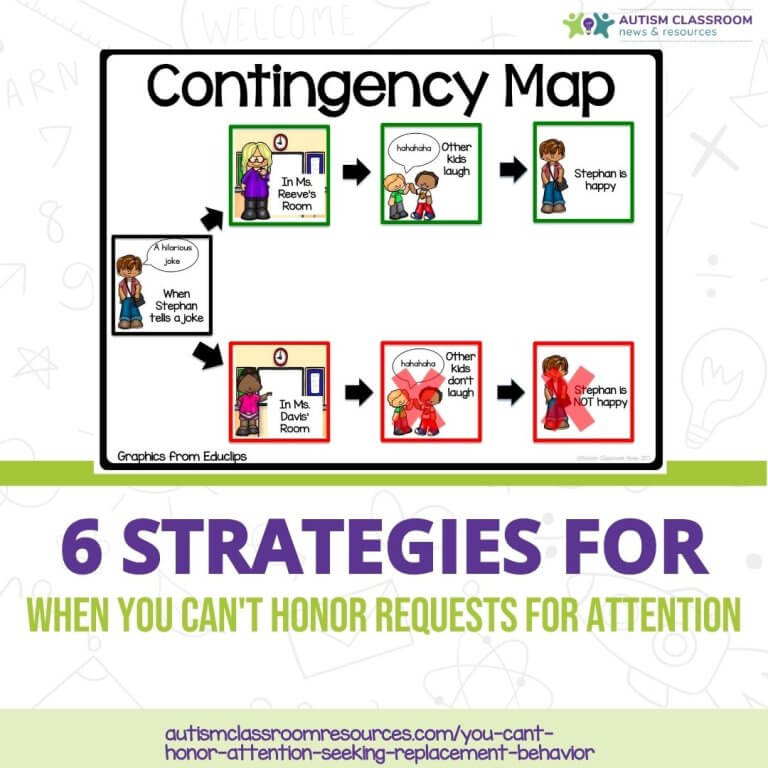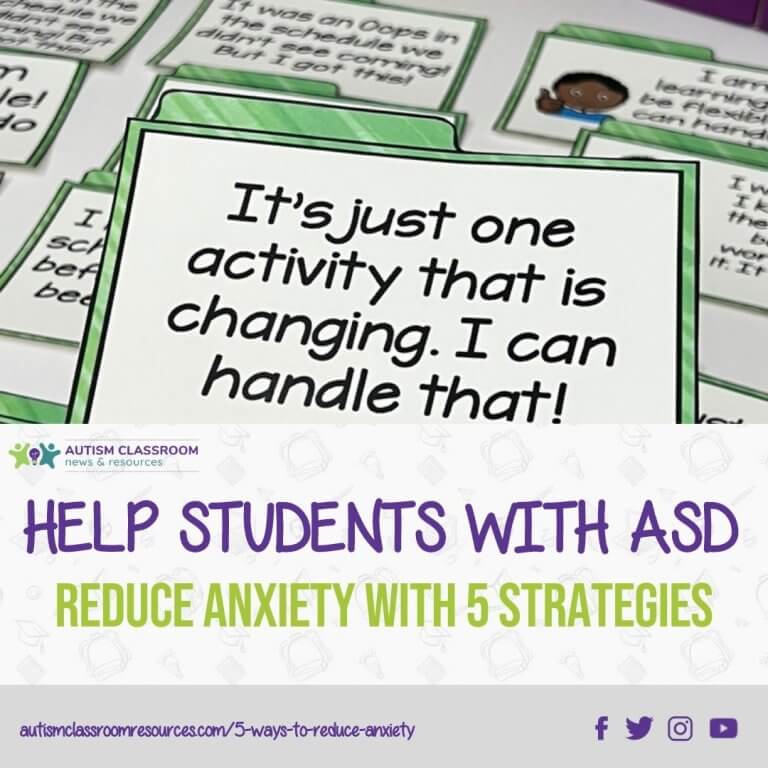Sharing is caring!
of you may be familiar with the term Positive Behavioral Support (PBS) or
Positive Behavioral Interventions and Support (PBIS). Having heard of it can be good or bad because
while it is a powerful tool, there are A LOT of misconceptions out there about
what those terms mean. I actually
started my career with the beginning of what would become PBS and then
PBIS. At that time, the focus (for me)
was on the development of approaches to challenging behavior that focused on
the function of the behavior and used positive (i.e., nonaversive) methods of
intervention to create
behavioral change.
Many behavior analysts see this development as a values-driven,
nonscientific approach to behavior. I
will tell you that my experience and my focus in the literature on PBS has been
a scientific approach to behavior that is also humanistic in its values. It may sound like a small distinction,
however, there are some important elements to that distinction. First, PBS must be based on science—or it
won’t work. Positive and pleasant
approaches that don’t work are not useful for our students. Next, PBS seeks to find answers to behavioral
issues by improving the quality of life for the individual—not just eradicating
the behavior. As I often tell my ABA
students, if we aren’t making the life of the client better, what are we doing
here? And finally, it focuses on the individual
as a person who is living in a context that affects the challenging behavior as
well as their quality of life. This is
the element that I find both most challenging and most interesting about
PBS. First, PBS recognizes that in order
to change the behavior of an individual, we have to change the behavior of
those around them. This is not an
uncommon concept for ABA. However, PBS
takes it the next step which is understanding that we need to change the
behavior or culture of the organization in order to maintain changes in
behavior AND that we can change behavior proactively (i.e., prevent it) by
changing the systems in which our clients/ students live and work. For me, that’s the hook that keeps me coming
back.
or state edicts that it will be adopted by all schools. It actually is the reason why FBAs are part
of the everyday language of special educators since 1997 because they were part
of the Individuals with Disabilities Education Act (IDEA) legislation that
year. Hopefully, though, you haven’t
encountered PBS as an approach that just wants to implement strategies that are
required and not focus on the outcomes and the changes and the science, but I
know some have. It is much more than a
feel-good philosophy that pays lip-service to behavioral approaches. It’s also about much more than just antecedent-based strategies that are created by changing the environment or adjusting demands. In fact the PBS literature (before we called it that) is where we got the focus on teaching replacement behaviors that help an individual get his needs met in a more appropriate manner (more on that in later posts).
in a lasting way that can be maintained by the people living and working with
the individual. It is also about a
philosophy that focuses on challenging behavior as a larger symptom of underlying
function, trying to figure out that function and then working as a team with
the people in the individual’s life to change the environment. It focuses on teaching new behavior, rather
than punishing because teaching creates long-term change; punishment changes
behavior in the here and now but it doesn’t always maintain the change.
levels: the individual level, the classroom level and the school level. They are all focused on the same thing:
creating environments that support appropriate behavior and minimize
challenging behavior. Here are some
advantages to a PBS or an ecological model of behavior analysis versus a
reactive (i.e., discipline) approach to challenging behavior.
intervene before the behavior even has fully emerged. See some whining of a 4-year-old because he
isn’t getting what he wants, teach him to ask for it appropriately and teach
him to wait for it after that and you can prevent full-blown tantrums down the
line that might have occurred if we had just waited for the behavior to
intensify.
Because of that proactive approach, you can develop
environments that promote appropriate behavior and minimize challenging
behavior based on the strategies we know, from science, to be effective in
preventing challenging behavior. This is
how School-wide Positive Behavioral Support works.
If you have a behavioral issue with a student, you have
tools to address the behavior when it is NOT occurring rather than having to
wait for a behavior to happen and then punish it. This gives you significantly more time for
intervention than if you were just using a reactive approach.
Being able to address the behavior when it isn’t occurring
also means the student is more receptive to learning. Most of us are not very receptive to feedback
and learning when we are upset, emotional or angry; our students are no
different. This significantly increases
the idea that we can make a change in the behavior because we can teach when
the student is receptive to learning.
There is a recognition within PBS that the world (and the
classroom) is not always a completely consistent place and not everyone can
implement every intervention. In a PBS approach,
a team of people who works with the individual daily participates in the
behavior planning process, based on the functional assessment, and that team
has input into what will work and what won’t in their everyday routine. Are
there times the routine needs to change to accommodate the individual? Absolutely.
However, are there likely more than one solution to the problem that
might accommodate the routine and environment as well as the individual—very possibly. This means that the behavior plan is more
likely to be implemented and effective because it should address the individual’s
needs as well as the contextual variables that make the environmental changes
possible.
from. I promise to get off my soapbox in
the next post and give you some practical how-tos for how to make PBS work. Until then, what has your experience with PBS
or PBIS been?
Until next time,

